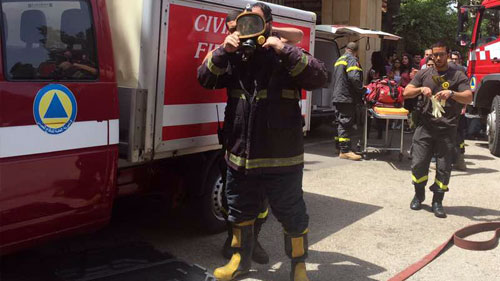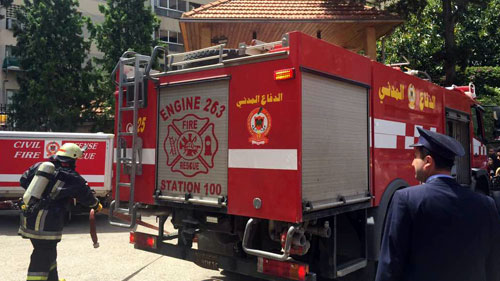Facilities Management FM
Plan, Build, Operate and MaintainLAU Beirut Fire Drill

LAU’s Facilities Management - Physical Plant, Environmental Health and Safety (EHS) Unit, in collaboration with the Maintenance Team and Beirut Civil Defense, the local emergency respondents, conducted a fire drill and delivered a rapid and effective response and recovery to a campus emergency exercise in Wadad Sabbagh Khoury Student Center (WKSC), Beirut Campus.
Preparation is key to effective response to workplace fire, hence, we organized a fire drill in WKSC which is classified as a business occupancy. Fire drills prepare occupants to respond quickly, calmly and safely.
The exercise took place at 12 p.m. on Wednesday, April 26, 2017, and simulated a fire emergency in WKSC.
Two weeks before the fire drill, small groups training were conducted by the EHS Unit to all WKSC’s tenants to remind them about the emergency procedures, and re-highlight the steps to follow in case of emergency.
On the planned fire drill day, at 12 p.m., a smoke machine hidden at the entrance of the building was turned on for smoke/fire simulation; a general alarm was triggered by pulling a manual pull station at the WKSC Cafeteria entrance.
The Maintenance team was notified about the alarm by receipt of a general alarm signal at the main control room and headed directly to WKSC.
Beirut Civil Defense were previously notified about the drill and arrived to LAU by 12:10 p.m. for support. Staff and students evacuated the building and assembled in front of the Nicol Hall entrance. The Maintenance team and Beirut Civil Defense swept the building to ensure no one was left behind.
As part of the drill, a maintenance team member played the role of an injured person and was rescued by Beirut Civil Defense members, ending the drill; subsequently, the fire alarm panel was reset, the building was ventilated and ‘Normal Condition’ was resumed.

The main objectives of the fire drill included giving occupants the opportunity to practice emergency procedures in a safe environment; determining if occupants understand emergency procedures and can easily implement them; evaluating the effectiveness of emergency/evacuation procedures and determining necessary changes to improve performance.
The outcome was successful to raise safety awareness; reduce occupants’ anxiety and fear during emergencies (due to the fact that they know what to do and they have already practiced emergency procedures); and reduce evacuation time.

Fire Safety Awareness Campaign
A ‘Fire Safety’ awareness campaign was also initiated by LAU’s Facilities Management, Environmental Health and Safety (EHS) Unit, to further increase readiness and communicate the importance of being prepared to LAU’s students, faculty and staff.
